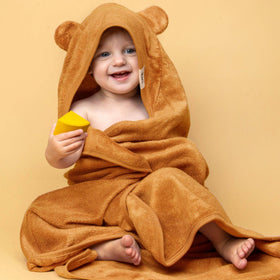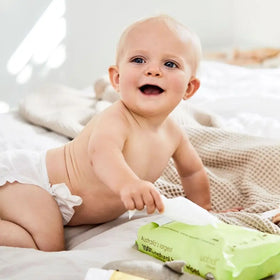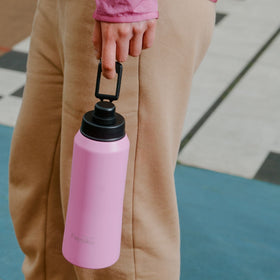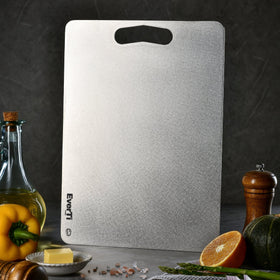
Toxic Living: Bubble Bath
Bubble bath isn't an essential skincare product in the way that say, toothpaste is. But it makes bathtime fun for little ones, and feels luxurious and relaxing for adults. But before you pour a capful of bubble bath into the bath, think about this. A bubble bath is not a 'wash off' product like shampoo is. You sit in the bath for a long time (depending on how good your book is, or how quickly the bathwater cools!), then you get out and dry yourself off. You don't have a shower after you have a bath, so whatever you put in the bath stays on your skin.

How safe is your bubble bath?
Although we don't have any such requirements in Australia, the United States Food & Drug Administration (FDA) says that:"It is very important to follow the directions on the label of the product and to not stay in Bubble Baths for prolonged periods of time."
The FDA requires that a warning should be put on all ‘foaming detergent bath products’: "Excessive use or prolonged exposure may cause irritation to skin and urinary tract". Why is that? Well, let's have a look at the ingredients commonly found in kids' bubble baths.
Common ingredients in bubble baths
A few common ingredients make up bubble bath products. There's surfactants to make the bubbles. You may find emulsifiers, which stop the ingredients from separating in the bottle. And there may be emollients (or skin conditioners), which make your skin feel soft after you get out of the bath.
Fragrance makes the bubbles smell good. Colours give the bath water a pretty tint. And finally, there are preservatives, which stop everything going off. Like all skincare products, there are safe and not-so-safe alternatives for all the ingredients. As I was researching baby and kids bubble baths, I found quite a few common ingredients that I would choose to avoid.
Ingredients to avoid in bubble bath
1. Fragrance - unless it's essential oil based, I avoid fragrance. Manufacturers don't have to disclose what's in perfumes. And so fragrances can contain suspected allergens and sensitisers, phthalates, neurotoxins and endocrine disrupters.
2. Phthalates - often found in perfume ingredients, and you won't know because manufacturers don't have to tell you. Read more about why I avoid phthalates.
3. Propylene glycol - used as a humectant (to lock moisture into your skin), an emulsifier and as a preservative. It can cause skin irritation and is associated with allergic contact dermatitis. Not an ingredient that I want to be soaking in!
4. Synthetic colours - FD&C or D&C colours are just in a product to make it look pretty. They're coal tar derivatives, which is a petroleum by product, and has contamination concerns.
Surfactants (the stuff that makes it bubbly):
5. Sulphates - these are common surfactants. SLS used to be very common, but manufacturers aren't using it as much because it's an irritant. But SLES is common, and I found it in a number of Australian kids bubble bath products. It's also an irritant. There's more about sulphates and why you should avoid them here.
6. Cocamidopropyl betaine - there are contamination concerns (nitrosamines being the main concern). That's why it's suspected of being an irritant. Lots of companies say it's 'derived from coconut' and so it's natural. However, it's so far derived from coconut that it’s basically synthetic. Besides contamination concerns, cocamidopropyl betaine is also a penetration enhancer. It means that other chemicals can get into your skin more easily. And that's concern if the other ingredients you're exposed to are toxic.
7. PEG's - can cause skin irritations, and shouldn't be used on broken skin. Also, there are concerns that PEGs can be contaminated with 1,4 dioxane. Avoid whenever you can!
8. Cocamide DEA - surfactant and emulsifier which scores a 7 in EWG. It's a skin toxicant and allergen. And it's linked to organ system toxicity. Plus it's considered to be a carcinogen, and there are concerns that it can be contaminated with nitrosamines. That makes for one toxic tub!
9. Polysorbate 20 - another surfactant and emulsifier. This one is problematic because it can be contaminated with ethylene oxide and 1,4 dioxane.
Preservatives:
10. Methylchloroisothiazolinone (MCI) and Methylisothiazolinone (MIT) - widely associated with contact dermatitis, especially in leave on products (like bubble bath).
11. Phenoxyethanol - can cause skin and lung irritation, and there is evidence of organ toxicity.
12. Sodium Hydroxymethylglycinate - scores a 5 in the EWG database, because it may release formaldehyde. Although it is derived from a natural source, it’s synthetic, not natural.










